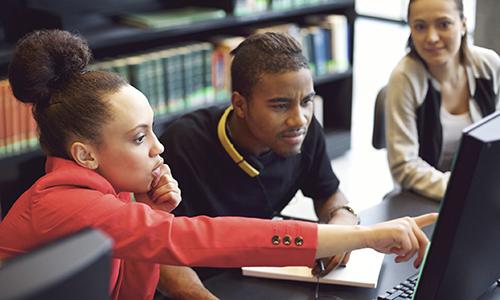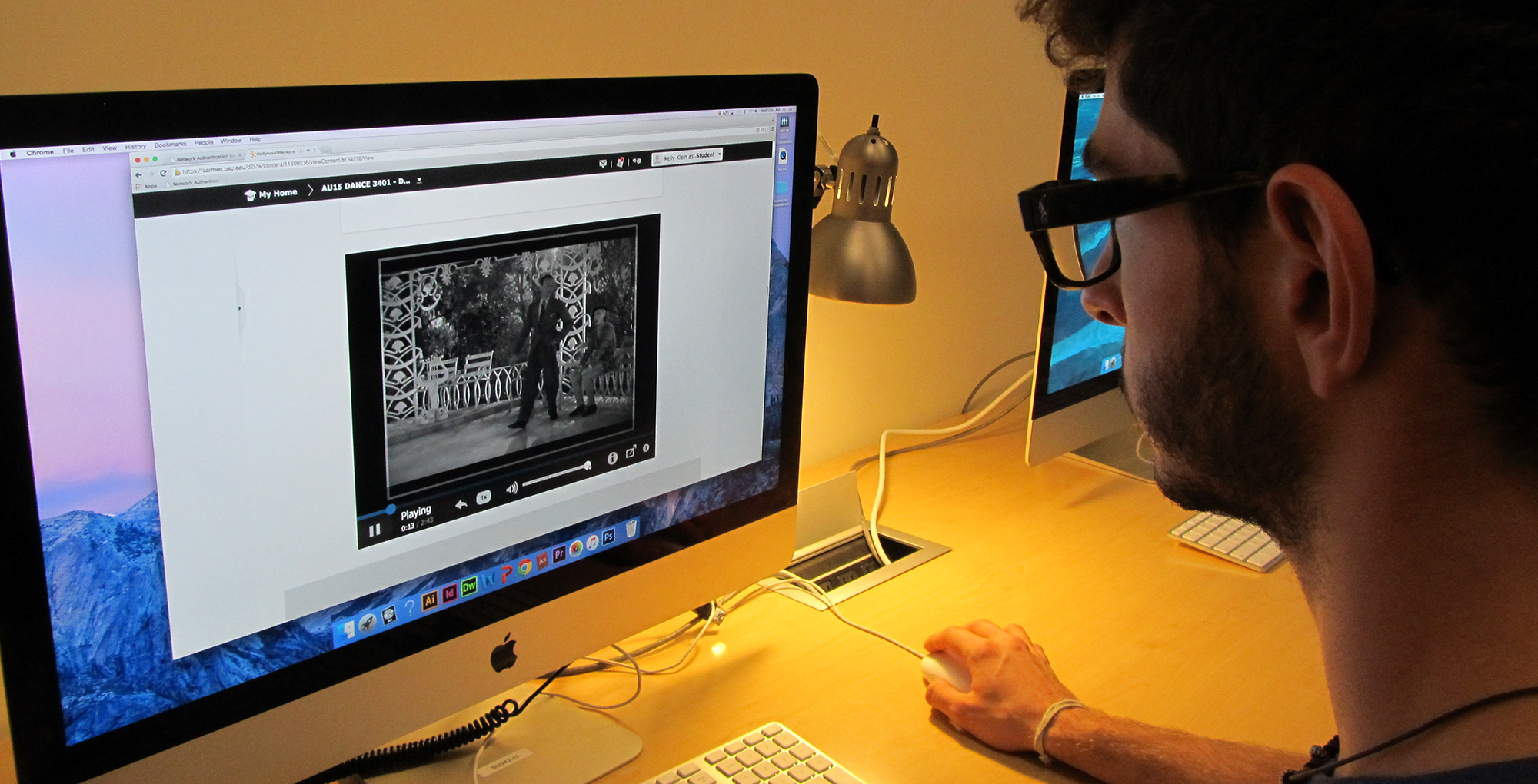Dance 3401
FROM THE CLASSROOM TO THE WEB
CREATING AN ENHANCED LEARNING EXPERIENCE
Students who sign up for the general education course Dance 3401: Dance in American Popular Culture now have a choice of formats to accommodate their schedules and learning styles. Premiering in 2015 as an online course, Dance in American Popular Culture is newly refreshed, with six modules covering dance on stage, on screen and in the clubs from 1890-2015. Pulling together excerpts of scholarly texts, images and over 200 video clips, these modules take the place of previous textbooks and place the entire course at students’ fingertips. Our next steps include a pilot of Dance in Popular Culture with College Ready Ohio, a program that enables advanced high school students to earn credit toward their college degree.
Creating an online course requires expertise and support from many domains. From autumn 2014 through summer 2015, Dr. Harmony Bench and graduate students Alex Harlig and Kelly Klein worked together to transform the ground course and generate new material for online delivery. With long-term support from the Department of Dance, tireless advocacy from Henry Griffy (ODEE), and timely financial assistance and instructional design support from ODEE, the vision for this course became a reality.
This online course is just the latest achievement in the Ohio State Dance Department’s long history of producing leaders and educators in the field of dance. As one of only four PhD programs in Dance Studies in the U.S., our undergraduate students benefit from our enthusiastic and forward-looking graduate teaching associates, who are the next generation of dance scholars, as well as the experience and deep expertise of our internationally recognized faculty.
STUDENT FOCUSED
For this phase of development, online educational tools were leveraged with a focus on four main benefits for students: affordability, enhanced learning, creative critical thinking and media access.

AFFORDABILITY
The Carmen learning management system (LMS) enables the creation of new content modules, which allowed us to generate and display original course content in an environment students already use. By transforming Carmen from an LMS into an electronic textbook platform, we have been able to represent the most current scholarship, remain accessible to a general education population, and save students the expense of buying textbooks. Books used in this course typically range from $25 to $160, but do not cover the range of dance forms and analytical perspectives we like to include. Designing this course in Carmen allowed us to include the materials we want, and simultaneously help students save up to $200 in course readings.

CREATIVE CRITICAL THINKING
Online courses are sometimes dismissed as being shallow educational experiences, but in fact, online courses can encourage deep thinking, planning and problem solving. For Dance in American Popular Culture, Dr. Bench teamed up with Dr. Alan Green, head of the Music and Dance Library, to design a cumulative final group project that would ask students to draw on library databases and primary sources in order to situate popular dance practices historically and culturally. By replacing traditional examinations and a solo-authored final paper with this collaborative, creative final project, the online course helps to develop information literacy alongside other learning objectives that emphasize the historical and cultural aspects of popular dance.

ENHANCED LEARNING
When we teach Dance in Popular Culture in person, there is a trade-off between the time spent watching media clips and the time to discuss the readings and analyze the visual examples as a class. Online delivery gives us the best of both worlds: working on their own time, students have ample opportunity to view and discuss the video and reading material when it is most convenient for them. Additionally, we are able to include more full-length films in the course. This means that students spend more time with the dance practices and popular media around which the course revolves, and get to the heart of critical commentary more quickly. It also means — and this may come as a surprise to students and faculty alike — that students spend more time writing than they might in a traditional classroom.

MEDIA
Copyright is a challenge for any course that addresses popular media. One of the greatest challenges in this course redesign was to gather appropriate images and video clips in a way that reflected fair use for educational purposes. We were able to source most of our images from library digital collections and Wikimedia Commons, and for all images, we listed identifying information in line with best practices. For the video clips, we worked with the Music and Dance Library to ensure that the university owns physical copies of all the DVD media used. We then added credits to each of the 200 or so film clips, music videos and web content files, which are collectively housed on MediaSite. While we use YouTube to host short video lectures recorded each week, due to the technological inability to distinguish between fair or educational use and copyright infringement, YouTube was not an option for our video clips.

